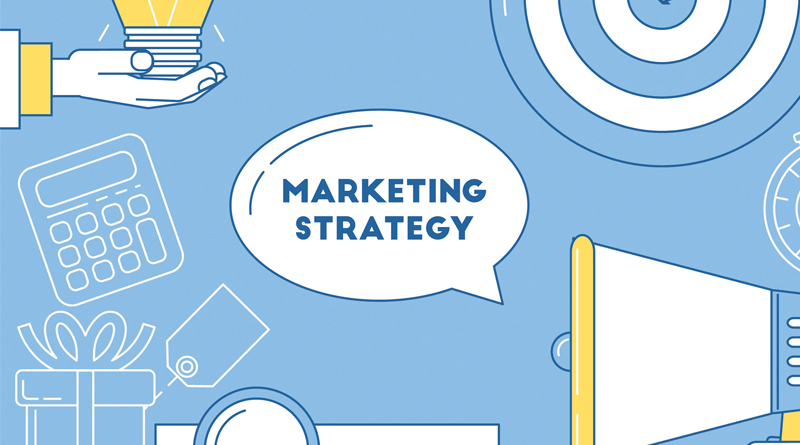Actionable Strategies for Marketing Independence
Marketing dependency is a dangerous gamble, especially for resorts that thrive on consistent customer engagement and bookings. Avoiding a single or limited strategy approach and safeguarding against being held hostage by agencies and vendors are crucial steps towards achieving marketing independence.
Read on for actionable strategies to ensure you are building a marketing ecosystem that will thrive long-term.
Own Your Data and Accounts
With regulations around data tightening constantly, it’s more important than ever to own your data and accounts. Besides the high commission cost of depending on Online Travel Agent (OTA) sites for most of your business, another downside is that they own that customer and their data. By investing in long-term strategies, you’re also owning the accounts and data that drives your business.
Some key considerations when ensuring your data and core marketing platforms aren’t ever held hostage are:
1. Control Your Data
Make sure you know who manages and owns your data. This includes customer information, booking details, and any other data collected through your marketing efforts.
2. Own Your Advertising Accounts
Ensure that all advertising accounts, such as Google Ads and social media accounts, are set up in your resort’s name with several people having access. If you allow a single employee, agency or partner to have access to these accounts, if something happens you need to be able to get access and retain the historical data. I cannot count how many clients have come to me simply to ask how to get access to their account after a former employee, contractor or agency couldn’t or wouldn’t turn it over.
3. Website Ownership
Your website URL and files should always be owned by your business. Register your domain and understand who controls your hosting. If things go wrong, you need to be able to move your site quickly without losing your online presence.
Secure Licensing Rights
Content is king, but only if you have the right to use it. Here’s what you need to do:
1. Understand Licensing
Make sure you have perpetual rights to all photo and video content produced for your resort. Some content creators impose time limits on usage, which can lead to legal issues down the road.
2. Negotiate Terms
When contracting with photographers, videographers, or other content creators, negotiate clear terms that grant you the rights to use the content however and whenever you want. This includes marketing materials, social media, and your website.
3. Document Everything
Keep all agreements and licenses documented. This protects you if any disputes arise about the usage rights of your content.
Vet Services and Deliverables
Before committing to an agency, thoroughly vet their services and deliverables:
1. Expert Review
Have an expert in marketing review the agency’s scope of services, pricing, and deliverables. This ensures you’re not overpaying and that the services provided align with your goals.
2. Clear Contracts
Make sure contracts clearly outline what you’re paying for and what you’ll receive. This includes specific deliverables, timelines, and performance metrics.
3. Ongoing Evaluation
Regularly review the agency’s performance. Are they meeting your expectations? If not, don’t hesitate to renegotiate terms or look for a new partner.
Diversify Your Marketing Strategies
Relying on a single marketing strategy can be risky. While the marketing for all businesses and resorts should be completely unique, there are some core strategies that all can consider to make up their diverse marketing ecosystem. The following core strategies can be prioritized and customized uniquely to any business situation.
1. Content Marketing
Create valuable content that attracts and engages your audience. This can include blog posts, videos, podcasts, and more. By consistently producing content, you build a loyal following, stay top of mind and build your brand while reducing dependency on paid advertising and OTAs.
2. Social Media
Utilize multiple social media platforms to reach different segments of your audience. Facebook, Instagram, Pinterest, LinkedIn, and TikTok all offer unique opportunities for engagement. Don’t put all your effort into one platform, but also don’t focus on too many if you don’t have the resources to maintain them well. Social media is about finding a strategy that perfectly aligns with your business brand, goals, needs and resources.
3. Email Marketing
Build and maintain an email list. Email marketing allows you to communicate directly with your customers, promoting special offers, updates, and personalized content. Many top marketing experts know that email is on of the smartest channels for long-term investment. SparkToro and Moz Founder, Rand Fishkin confidently details that “email is the most consistent, reliable marketing channel on the web and [he] can prove it.”And speaking of reducing dependency, Rand states at the end of this article that “I strongly recommend against outsourcing ownership of your email list to Substack, Beehiiv, Medium, or any of the other platforms that don’t give you full ownership and control.”
So grow your email list, but strategize on how to grow it, own it and control it internally.
4. SEO and Organic Traffic
Invest in search engine optimization (SEO) to improve your organic search rankings and traffic. This reduces dependency on paid ads and drives consistent, long-term traffic to your website with content that you fully own.
Build Strong Customer Relationships
Strong customer relationships are the backbone of a successful marketing strategy.
1. Personalization
Use data to personalize your marketing efforts. Tailor your messages to individual customer preferences and behaviors to create a more engaging experience.
2. Customer Service
Exceptional customer service fosters loyalty. Train your staff to go above and beyond in meeting customer needs, both online and offline.
3. Loyalty Programs
Implement loyalty programs that reward repeat customers. This not only incentivizes bookings but also encourages word-of-mouth referrals.
Leverage Technology and Automation
Technology can streamline your marketing efforts and increase efficiency.
1. Marketing Automation
Use marketing automation tools to handle repetitive tasks like email campaigns, social media posting, and customer segmentation. This frees up time to focus on strategy and creative efforts.
2. Analytics and Reporting
Implement robust analytics to track the performance of your marketing campaigns. Understanding what works and what doesn’t allows you to optimize your efforts continually.
3. CRM Systems
A customer relationship management (CRM) system helps manage interactions with past, current, and potential customers. It centralizes data, making it easier to personalize marketing and improve customer service.
Invest in Training and Development
Your team’s skills are critical to your marketing success.
1. Continuous Learning
Encourage your marketing team or individual to stay updated with the latest trends and technologies. This can be through online courses, workshops, or industry conferences.
2. Cross-Training
Cross-train your staff in different areas of marketing. This ensures that if one person leaves, others can step in and maintain continuity. Plus marketing is everyone’s job – from housekeeping to customer service – everyone has some impact on the customer experience which can either feed or drain marketing efforts.
3. Hire a Consultant or Fractional Leader
Some consultants will focus on training and reviewing efforts with in-house staff, providing an affordable option for expert help for businesses without the resources for full-time. Hiring a Fractional Chief Marketing Officer is an affordable way many businesses have started to get expert marketing support even when they don’t have a full-time need or budget.
Foster Strategic Partnerships
Building relationships with other businesses can amplify your marketing efforts.
1. Local Partnerships
Partner with local businesses and attractions to create joint marketing campaigns. This can include co-branded promotions, events, or special packages.
2. Influencer Collaborations
Work with influencers who can reach your target audience. Ensure these collaborations align with your brand values and objectives and that the agreement is clear with outlined deliverables and content ownership.
3. Affiliate Programs
Create affiliate programs that incentivize others to promote your resort or business. This expands your reach without significant upfront costs.
Monitor Industry Trends and Adapt
The marketing landscape is constantly evolving.
1. Trend Monitoring
Regularly monitor industry trends and adapt your strategies accordingly. This includes keeping an eye on competitors, new technologies, and changing customer behaviors.
2. Flexibility
Be prepared to pivot your marketing strategy as needed. Flexibility allows you to respond quickly to new opportunities or challenges. The world, consumer habits and technology is changing too rapidly to not develop a flexible strategy.
3. Feedback Loops
Establish feedback loops with your customers to understand their needs and preferences. Use this information to refine your marketing efforts continually. I’ve seen so many businesses take the effort to collect reviews, without taking the time to analyze trends and make operational changes to address those trends.
Achieving marketing independence for your resort requires a multifaceted strategy. By owning your data and accounts, securing licensing rights, vetting services and deliverables, diversifying your strategies, building strong customer relationships, leveraging technology, investing in training, fostering strategic partnerships, and staying adaptable, you can create a resilient and effective marketing strategy.
This not only protects your resort from potential pitfalls but also positions you for sustained success in an ever-changing market.
Kelley Ellert is the owner of Waterwheel Marketing, a marketing consultancy that develops and implements marketing solutions for hospitality businesses of all sizes. Find her on LinkedIn @kelley-ellert or at WaterwheelMarketing.com.



